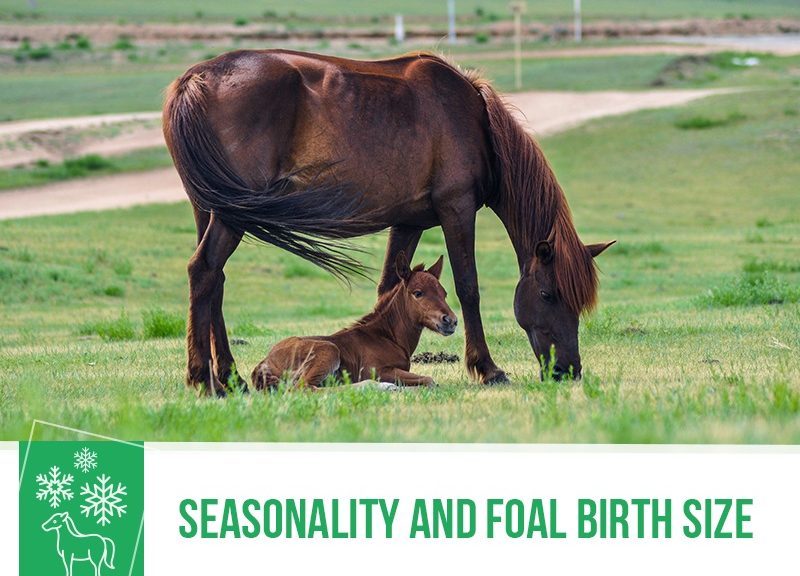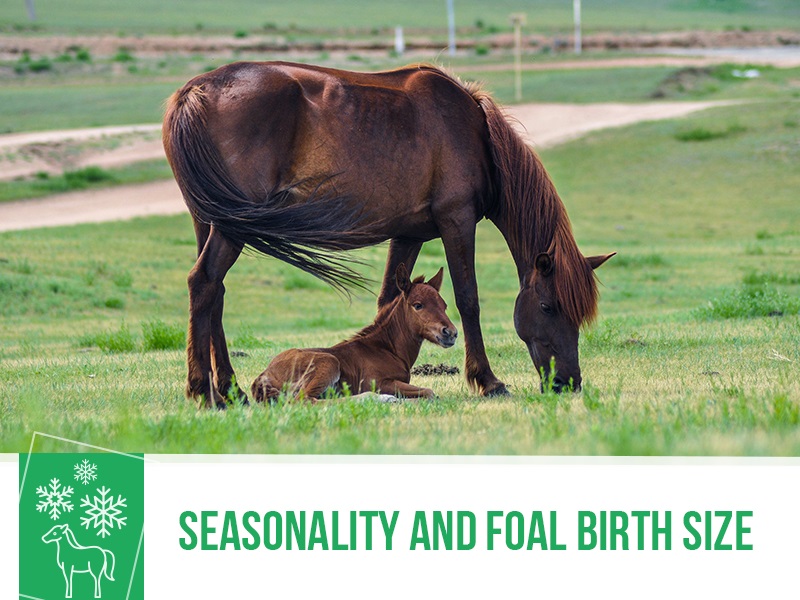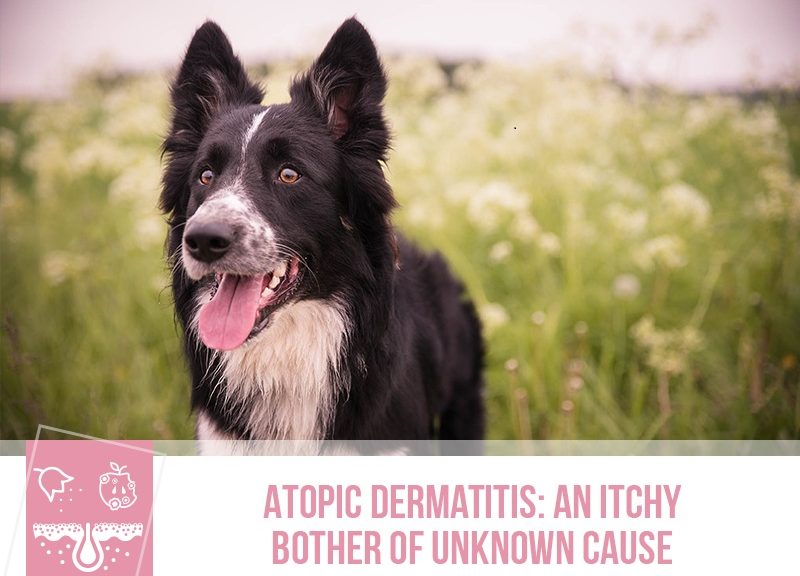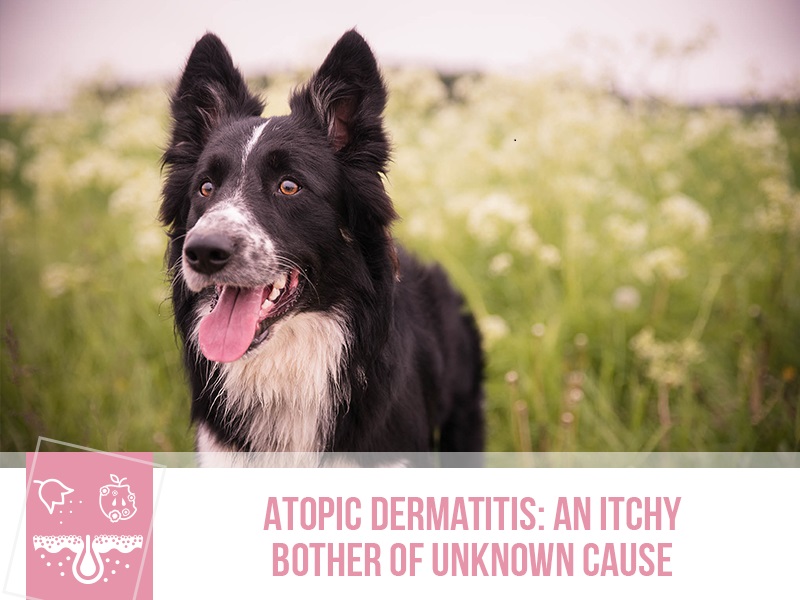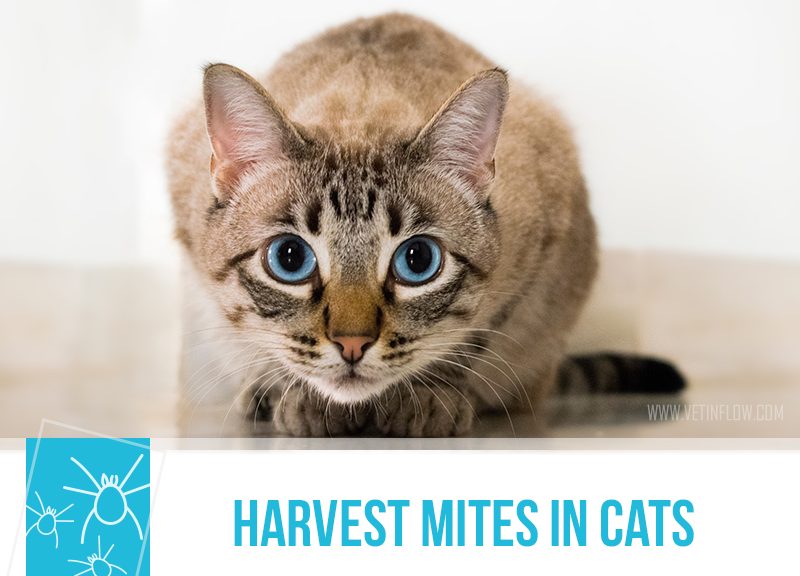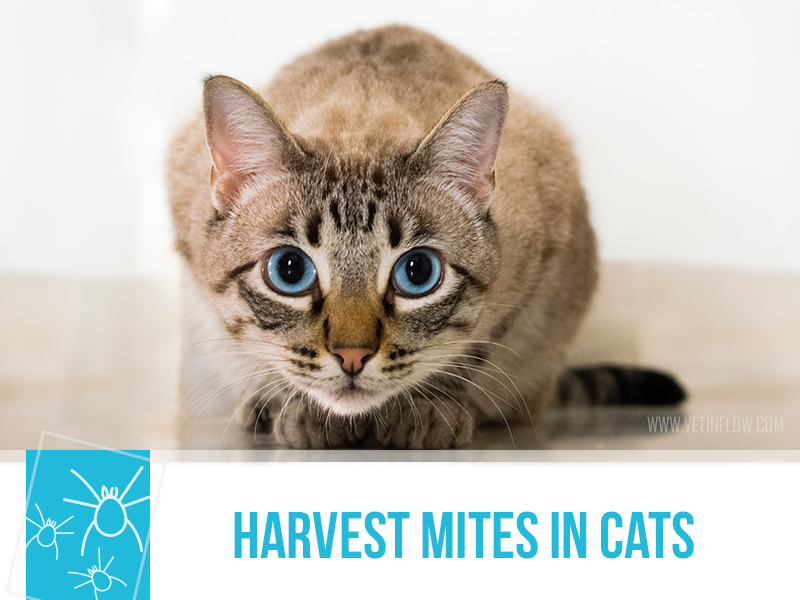Fresh from the presses! Published just this year in May, a new study sheds light on the how and why of seasonal size differences in foals.
Horses, like many other animals, are seasonal and their metabolic processes will vary during the year. Makes sense, nutrients available in Winter are not the same as the ones available during the Summer, which means that the body will have to adjust accordingly.
Knowing this, it’s not hard to imagine that the mare will have a different nutritional supply to the foetus as the seasons change. Foals born in the last stretch of Winter (February and early March) had a smaller height due to bone development but did not have a significant weight difference from foals born after the 1st of May. This difference can stretch from birth up until 12 weeks of age.
This happens because there is a rapid foetal growth done in the last stretch of gestation and at that time, the mare has reduced metabolic rates that seem to be independent of nutritional status. Which is to say, the mares in the study were adequately fed but the foal height was still smaller than the height recorded for mares foaling later in the season.
Is this an indication that is best to aim for births later in the season? Researchers are not sure yet but we will keep an eye out for new conclusions!
Would you like to know more about horses? Check our Equine Courses:
